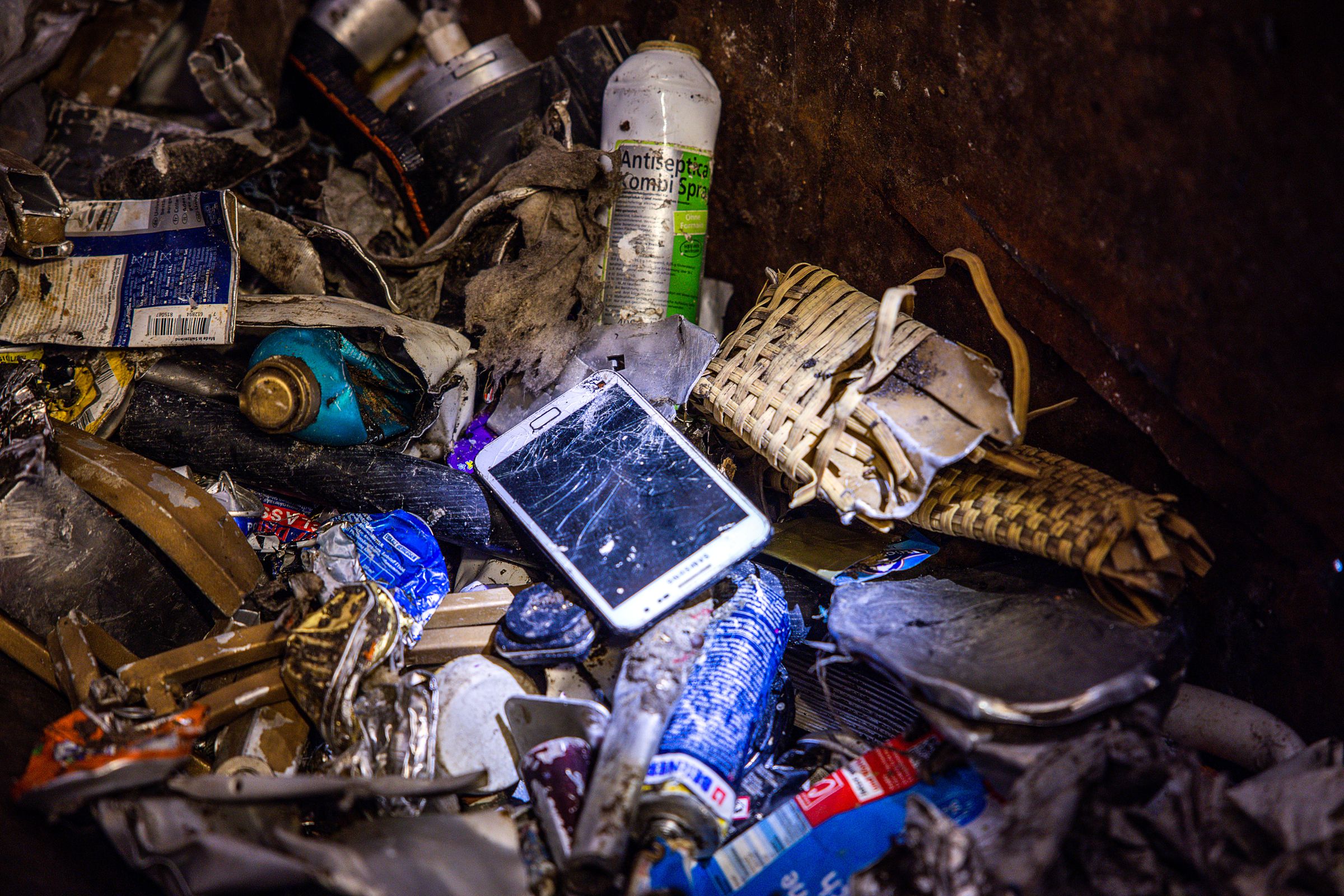Rechargeable lithium-ion batteries used in everyday gadgets, electric vehicles, and to store renewable energy could be a growing source of the “forever chemicals” that pollute soil and waterways, new research suggests.
“Forever chemicals” encompass thousands of different kinds of per- and polyfluoroalkyl substances (PFAS). For decades, they’ve been used to make products more resistant to water, stains, and heat. More recently, a particular subclass of PFAS called bis-perfluoroalkyl sulfonimides (bis-FASIs) has been used as electrolytes and binders in lithium-ion batteries.
Those bis-FASIs are now showing up in soil, sediment, water, and snow surrounding manufacturing facilities, according to research published yesterday in the journal Nature Communications. The study authors also found bis-FASIs in liquids that leached from landfills.
It’s a problem that could grow as more pieces of our lives become all-electric — from cars to homes and buildings
Taken together, it points to lithium-ion batteries as a potential vector for forever chemical pollution from cradle to grave. Without taking action, it’s a problem that could grow as more pieces of our lives become all-electric — from cars to homes and buildings.
“It’s definitely not intended to be anti-clean or sustainable energy ... It’s really meant to highlight, ‘Hey, let’s include environmental risk assessments of the things that we’re using in this infrastructure,’” says lead author Jennifer Guelfo, an assistant professor of environmental engineering at Texas Tech University.
“It’s basically a starting point. And what I hope is that it leads to more attention to these compounds and others like them in applications that are emerging in both clean energy as well as consumer electronics,” adds P. Lee Ferguson, another study author and an associate professor of civil and environmental engineering at Duke University.
The researchers took water, sediment, and soil samples from 87 different locations in Minnesota, Kentucky, Belgium, and France between January and October 2022 — targeting areas near forever chemical manufacturers including 3M and Arkema, among others. They found concentrations of bis-FASIs in the parts per billion (ppb) common near manufacturing facilities. “You don’t just find that out there typically as like background concentration,” Guelfo says. “Parts per billion is usually something that’s associated with some form of impact.”
For comparison, that’s less PFAS contamination than you might find in the environment from a release of fire-fighting foam, according to Guelfo. PFAS levels might be in the parts per million in that scenario, about a thousand times higher than the bis-FASI concentrations Guelfo and her colleagues typically found near manufacturers. But the contamination they documented is still orders of magnitude higher than limits the Environmental Protection Agency set this year for other kinds of PFAS in drinking water. The agency’s limit is four parts per trillion for two of the most common types of forever chemicals.
There aren’t any federal regulations yet for bis-FASIs in particular, which haven’t been used as ubiquitously as other kinds of PFAS for as long. Because PFAS has been used in everything from nonstick pans to food packaging, fabric protector, and dental floss — certain types of PFAS have likely already entered most Americans’ bloodstreams.
Scientists are still trying to understand how exposure to PFAS affects people, and even less is known about bis-FASIs specifically. But studies on more common types of PFAS have linked high exposure to a higher risk of certain kinds of cancer, liver damage, high cholesterol, and reproductive health issues including lower infant birth weight. Bis-FASIs are likely to persist for a long time in the environment, the new research suggests, but could potentially be cleaned up using similar methods for treating other kinds of forever chemicals in drinking water.
Since there are so many different kinds of PFAS and mounting concerns about the risks they pose as a class of chemicals, the researchers say we might not want to wait to find problems later on if we can take measures now to protect health and the environment. 3M, which faces a slew of lawsuits for producing PFAS over the years, has committed to phasing out forever chemicals by the end of next year and continuing to clean up pollution near its facilities afterwards. That includes no longer manufacturing bis-FASIs, the company tells The Verge in an email. Arkema didn’t immediately respond to a request for comment from The Verge.
“I would argue that we should take a proactive stance in terms of mitigating environmental releases of PFAS instead of waiting until we have done decades of toxicology research to say, ‘Hey, maybe we should mitigate this in drinking water,’” Guelfo says.
What’s more, lithium-ion batteries are becoming even more in demand for EVs and solar and wind power. The study authors tested 17 different batteries used in laptops, smartphones, tablets, electric vehicles, and more and detected bis-FASIs in 11 of them. And since it’s estimated that only around 5 percent of lithium-ion batteries are recycled, they decided to look near landfills for bis-FASIs, too. They analyzed existing lab samples of leachates collected from North Carolina landfills and found concentrations nearing the parts per billion range.
“This is a very interesting study from a group of very-qualified investigators,” A. Daniel Jones, associate director at the Michigan State University Center for PFAS Research who was not involved in the research, said in an email to The Verge. “This work draws attention to an often-neglected PFAS chemical and suggests that it is readily transported through the environment. It is also important that this study draws attention to the need for greater awareness of the implications of the full life cycles of lithium batteries.”
